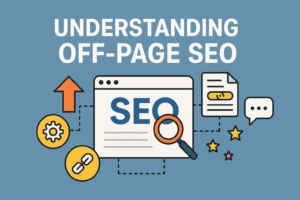Understanding the Importance of Local SEO
Local SEO helps businesses increase visibility in search results for geographically relevant queries. When users search for services near them, search engines prioritize businesses with strong local optimization.
For brick-and-mortar stores, local service providers, and even online businesses with a specific target area, appearing in local searches can drive more foot traffic and inquiries.
Local SEO factors include:
- Google My Business optimization
- Local citations and NAP (Name, Address, Phone Number) consistency
- Reviews and ratings
- On-page SEO tailored for local keywords
- Mobile-friendly and voice search optimization
With more searches happening on mobile devices, businesses that invest in local SEO have a better chance of attracting customers actively looking for their products or services.
Optimizing Google My Business for Better Visibility
Google My Business (GMB) is one of the most effective tools for local SEO. A well-optimized profile increases the chances of appearing in Google’s Local Pack and Maps.
Setting Up and Verifying Your Profile
Start by claiming your business listing on Google My Business. Ensure that your business name, address, and phone number (NAP) are accurate and match across all listings.
Google requires verification, usually via a postcard sent to your business address. Once verified, complete your profile with a detailed description, business hours, and relevant categories.
Choosing the Right Categories and Keywords
Selecting appropriate business categories improves relevance in search results. Use keywords that describe your services while keeping descriptions natural.
Include:
- Primary category that best describes your business
- Secondary categories for additional services
- Keyword-rich descriptions while avoiding keyword stuffing
Encouraging and Managing Reviews
Positive reviews improve credibility and search rankings. Encourage satisfied customers to leave reviews and respond to them professionally. Address negative feedback constructively.
Building Local Citations and NAP Consistency
Local citations are mentions of your business on directories like Yelp, Facebook, and industry-specific sites. Consistent NAP information across these platforms reinforces search engine trust.
- Use the same format for your business name, address, and phone number everywhere.
- Submit listings to reputable directories.
- Regularly audit and update incorrect or outdated citations.
On-Page SEO Strategies for Local Businesses
Optimizing Title Tags and Meta Descriptions
Use targeted local keywords in title tags and meta descriptions. Keep them engaging while maintaining readability and keyword relevance.
Using Schema Markup for Local SEO
Schema markup provides search engines with structured data about your business. Implementing local business schema improves visibility in rich search results.
Leveraging Localized Content for Better Engagement
Creating locally relevant content helps connect with the community.
- Publish blog posts about local events or industry updates.
- Highlight customer success stories.
- Use location-based keywords in website content.
Mobile Optimization and Voice Search Considerations
With mobile searches increasing, a mobile-friendly website is crucial.
- Ensure fast-loading pages and responsive design.
- Optimize for voice search by using conversational keywords and FAQs.
Tracking and Measuring Local SEO Success
Regularly monitor local SEO performance through:
- Google Analytics for website traffic insights
- Google Search Console for search visibility
- Google My Business Insights for engagement metrics
Adapting strategies based on data improves long-term results and keeps businesses competitive in local search rankings.





